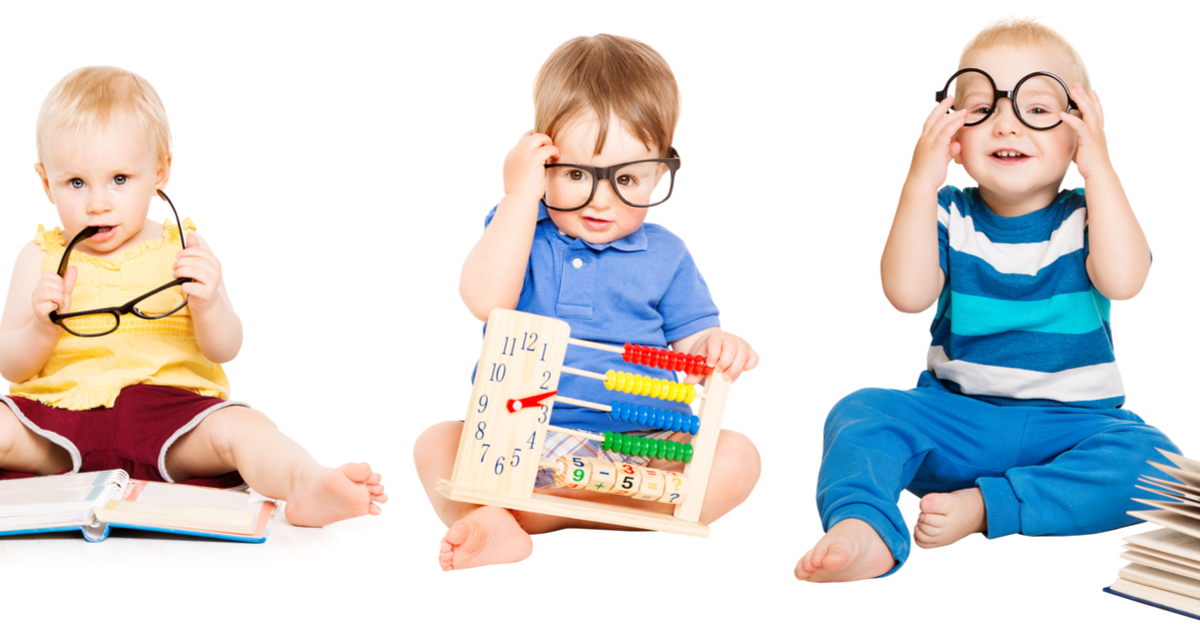Early Brain Development

We are learning more and more about early development and how critical this time span is for the child and his future. It may not be as apparent, however, that this development has great impact on our child’s brain development. This is no small area. The brain is a complex organ that allows us to think, act, feel, speak, create, and love. It mediates all the qualities of human kind – good and bad. If early development impacts all of these areas of our life, early brain development takes on a whole new perspective, and perhaps, even an urgency.
The good news is that we now know that the brain has plasticity which means that it has the ability to be “changed”. So if there is a problem with the brain, there is treatment in helping it become more optimal in its functioning. However, how the brain gets organized and structured depends on our early development. Optimal development of the more complex systems in our brain (limbic and cortex) requires a healthy development of the less complex systems (brain stem and mid brain). And this development is all geared by relationships and experiences in our early life. Bruce Perry, M.D., Ph.D, is an internationally-recognized authority on children in crisis. He states that “experience can change the mature brain – but experience during the critical periods of early childhood organizes brain systems.” (Perry, 2010) The brain structure is developmentally worked out and organized during the early years of zero to three years old.
This structure starts at the beginning from the brain stem, the reptilian primal part of the brain. One of the first and fundamental tasks an infant undertakes is determining whether and how he can get his needs met in the world in which he lives. He is constantly assessing whether his cries for food and comfort are ignored or lovingly answered, whether he is powerless or can influence what adults do. If the adults in his life respond predictably to his cries and provide for his needs, the infant will feel secure. It is only after this foundation of security is laid that he can then focus his attention on exploring, allowing his brain to take in all the wonders of the world around him. He can then build on this foundation and move out of the brain stem development into the next area.
However, if his needs are met only sporadically and his pleas for comfort are usually ignored or met with harsh words and rough handling, the infant will focus his energies on ensuring that his needs are met. He will have more and more difficulty interacting with people and objects in his environment and his brain will shut out the stimulation it needs to develop healthy cognitive and social skills. He will operate from his brain stem, which is his primal brain that focuses on survival. This is the part of the brain that triggers our fight, flight, or freeze action. It is important that our children be able to move beyond this part of their brain development and into the more complex areas of the brain.
During the first three years of life, children experience the world in a more complete way than children of any other age. The brain takes in the external world through its system of sight, hearing, smell, touch, and taste. This means that an infant’s social, emotional, cognitive, physical, and language development is stimulated during multi-sensory experiences. Infants and toddlers need to be immersed in a sensory enriched environment, giving them the opportunity to be stimulated on all levels in a positive way. All of these experiences, through the senses, impact brain development.
The brain neurons exist apart from each other at birth. The brain is the only body organ incomplete at birth and is still preparing for full operation. After birth the infant begins the work of connecting neurons to create pathways into the brain. So begins the process of brain development which consists of wiring and rewiring the connections (synapses) between neurons. During his first three years of life, the child’s developmental task for the brain is to connect the neurons with other neurons. This happens when impulses are sent and received between neurons forming synapses (through experiences). Synapses are the paths or avenues that allow individual nerve cells to connect with each other. These trillions of synapses and pathways they form make up the wiring of the brain. The number and organization of these connections influence everything, from the ability to recognize letters to the maintenance of relationships. These pathways are made through interaction between the young child and others. Perry says the more secure relationships the child has, such as with extended family, the more his brain can grow and develop these pathways.
Between birth and age three, the brain creates more synapses than it needs. Maria Montessori, years ago, called this time that of the “Absorbent Mind” (Montessori, 1995) The synapses that are used a lot become a permanent part of the brain. Those not used frequently are eliminated (pruned away). This is where experience plays an important role in wiring a child’s brain. The child’s experiences are the stimulation that sparks the activity between axons and dendrites (neurons) and creates synapses. By having experiences and opening the brain to new opportunities, the connections are developed. The more something is experienced, the more “hard wired” we are in that area. The more the brain is stimulated, the more it develops. The synapses become more complex, like a tree with branches growing. During the first three years of life, we don’t create more neurons, we create more pathways through our experiences. After the age of three, the creation of synapses slows until about age ten.
If we want our children to have the opportunity to really develop their brains, then we have to offer them nurturing, supportive and predictable care. This type of parenting fosters curiosity, creativity, and self confidence. Your children need safety, love, conversation and a stimulating environment to develop and keep important synapses in the brain. They also need this to develop their primary brain functions, setting up the ability to develop their more complex brain functions. Caring for infants and toddlers is mostly about building relationships and making the most of everyday routines and experiences. The top ten things every child needs for influencing brain development are the following: parent/child interaction, loving touch, stable relationships, safe and healthy environment, self-esteem, quality child care, play, communication, music and reading. (Foundation, Ten things every child needs for the best start in life!, 1999) In future newsletters, I will be addressing some of these areas and how they build strong brain foundations and healthy brain functioning.
Foundation, R. R. (Director). (1999). Ten things every child needs for the best start in life! [Motion Picture].
Montessori, M. (1995). The Absorbent Mind. New York: Henry Holt and Company, LLC.
Perry, B. (2010). Meet Dr. Bruce Perry. Retrieved October 6, 2010, from www.ChildTraumaAcademy.com.
Tags: early development and the brain, neurofeedbackABOUT THE AUTHOR

Janie Pfeifer Watson
Licensed Independent Clinical Social Worker
Licensed Independent Mental Health Practitioner- Janie Pfeifer Watson, LICSW, is the founder and director of Wholeness Healing Center, a mental health practice in Grand Island, Nebraska with remote sites in Broken Bow and Kearney. Her expertise encompasses a broad range of areas, including depression, anxiety, attachment and bonding, coaching, couples work, mindfulness, trauma, and grief. She views therapy as an opportunity to learn more about yourself as you step more into being your authentic self. From her perspective this is part of the spiritual journey; on this journey, she serves as a mirror for her clients as they get to know themselves—and, ultimately, to love themselves.
LATEST ARTICLES BY Janie Pfeifer Watson
- Gentle and Grounded – A Mindful Reset for 2026
- Glimmers of Light – Nurturing Joy During the Holidays
- Live Stronger: Strength, Balance, and Social Connection after 50 Stay strong. Stay Connected. Stay independent.
- Healing is a Lifelong Journey, and It Doesn’t Happen in a Straight Line
- Habits to Develop to Age Well
Subscribe today
Sign up to receive the latest mental health tips and inspiration